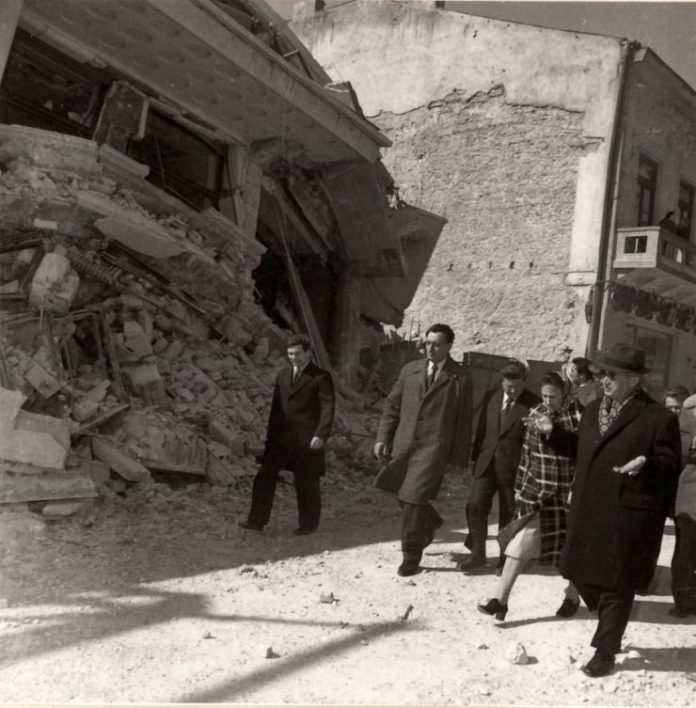Romania has been rattled by 16 quakes with a magnitude higher than 5 since the deadliest earthquake of recent times 44 years ago which hit the capital.
The temblor struck Bucharest on the evening of March 4, leaving 1,500 dead_ the vast majority of fatalities were in the capital_ and demolishing buildings across the city.
The 7.2 earthquake was the worst in modern times in terms of size, damage and loss of human life.
Communist leader Nicolae Ceausescu ordered the construction of new buildings strong enough to withstand the next big quake and there was a building spree of high-rise apartment buildings in the 1980s.
Since then, there have been 16 earthquakes of more than 5, but they caused minimal damage. The last sizeable quake was in in October 2018 in the Vrancea region which measured 5.9. No substantial injuries were reported.
More than 40 years after the last major quake of modern times, the city of two million still has hundreds of buildings which are in a state of disrepair and in danger of collapse in the case of a major temblor.
Bucharest mayor Nicusor Dan on Thursday acknowledged that the city didn’t have an inventory of buildings that were of risk of collapse.
He took part in a debate Thursday at the Romanian Academy Library called “Why do we forget? What have we done with ramshackle buildings?” Agerpres news agency reported.
“Our major problem us that we haven’t carried out an inventory of earthquake-prone buildings,” he said, “Roughly speaking, any building which has more than three or four floors and was built before 1940 is a potential risk.”
The mayor used the occasion to talk plans to consolidate buildings which are considered at risk following a prior assessment.
He said the city hall planned to assess buildings covering 500,0000 square meters which is “a big problem.”
He said that he wanted to dismantle the current municipal company tasked with reinforcing earthquake-risk buildings.
„Generally speaking, municipal companies distort the market, because they weren’t created with a market purpose, and (instead) they paid undeserved salaries to experts qualified in other things and that’s clear from the way the (municipal) building companies” operate.


















